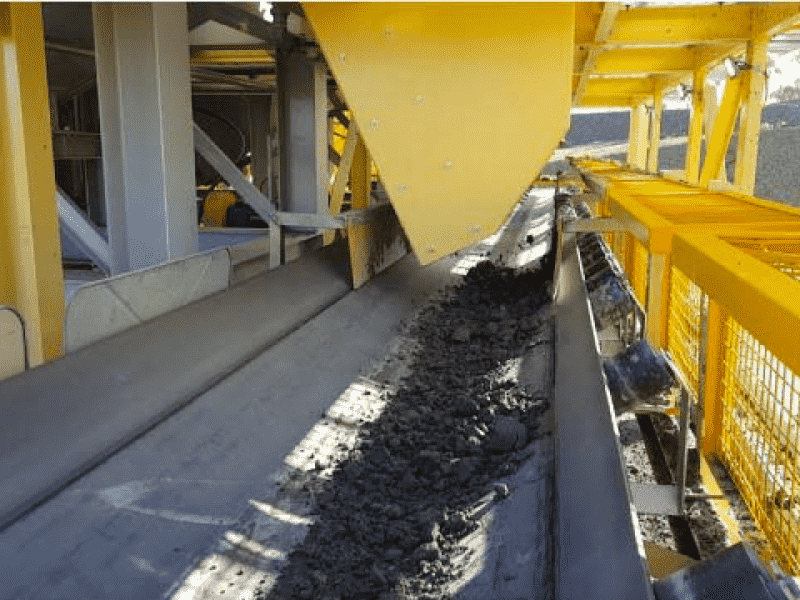Home
Land & Marine
Geological Services Pty Ltd
(L&MGSPL)
L&MGSPL and its Subsidiary Company TSF Reviews PL (TSFRPL) specialise in the execution of high-level geotechnical work associated with tailings storage facilities (TSFs) and other mine infrastructure from initial site reconnaissance and assessment during exploration through study phases for the development of mine projects.
Execution of high-level geotechnical work associated with tailings storage facilities (TSFs)

Chris Lane is Director and Principal Consultant (Engineering and Environmental Geologist) of L&MGSPL/TSFRPL with broad experience in civil construction fields, including site investigation of land based and marine based developments, and particular expertise in large resource projects.
He has more than 30 years’ experience in resource projects including site investigation and construction of infrastructure (plant sites, heap leach facilities, roads, railways and airstrips and tailing storage facilities (TSFs)).
Tailings storage facility experience
Involvement with TSFs covers aspects of design, construction, auditing and tailings/residue management reviews for a large number of projects covering a range of commodities including: alumina residue, bauxite residue, base metals (copper, lead and zinc), coal, gold, graphite, iron ore, manganese, nickel (sulphide and laterite), phosphate residues, rare earth residues, uranium and vanadium.
Special interests are dry stacked tailings storage facilities (DSTSF), Inpit TSFs, and Integrated waste landforms (IWL).
Chris has experience in the following overseas locations United Kingdom; Middle East (Egypt, Iran, Oman, Saudi Arabia and the United Arab Emirates); Armenia; Pakistan; Southeast Asia (Indonesia, Malaysia, Papua New Guinea, Philippines and Vietnam); West Africa (Burkina Faso, Ghana, Ivory Coast, Mali, Senegal), East Africa (Ethiopia, Tanzania) and Southern Africa (Mozambique, South Africa and the Democratic Republic of Congo); South America (Brazil, Chile, Guyana and Uruguay).
Climatic experience covers Tropical (high rainfall); Humid Savannah (high seasonal rainfall); Temperate; Semi-arid; Arid; and Hyper Arid.
Do you have a tailings storage facility or potential mine project where you need some help with your tailings storage?
Experience
Central Norseman Gold Corporation Limited
Advice on design concepts (start up through to closure), operation, audits, inspections, management reviews, advice on seepage, stability, tailings deposition, water recovery and preparation of tailings disposal strategy plans.
Country:
Australia
Climatic:
Semi Arid
Chalice Gold Mine
Advice on design concepts (start up through to closure), operation, audits, inspections, management reviews, advice on seepage, stability, tailings deposition, water recovery and preparation of tailings disposal strategy plans.
Country:
Australia
Climatic:
Semi Arid
Channar Iron Ore Project
Project Manager with responsibility for: Geotechnical investigation for all major structures. Primary Crusher, Primary Stockpile, Secondary Crusher, 25km Conveyor, access roads and aggregate survey. Supervision and organisation of fieldwork (geological mapping, borehole, costean and testpit excavations). Organisation of laboratory testing and preparation of factual and evaluation reports.
Country:
Australia
Climatic:
Semi Arid
Chilalo Graphite (Tanzania)
Project Geotechnical Consultant to Evolution Energy Minerals Limited for their proposed Co-Mingled Tailings and Mine Waste. Evaluation of FS data prepared by others and preparation of recommendations on stacking for the project.
Country:
Australia
Climatic:
Semi Arid
Cikondang Gold Project
Advice on design concepts (start up through to closure), operation, audits, inspections, management reviews, advice on seepage, stability, tailings deposition, water recovery and preparation of tailings disposal strategy plans.
Country:
Indonesia
Climatic:
Tropical
Cockatoo Island Iron Ore Beneficiation Project
Advice on design concepts (start up through to closure), operation, audits, inspections, management reviews, advice on seepage, stability, tailings deposition, water recovery and preparation of tailings disposal strategy plans.
Country:
Cockatoo Island
Climatic:
Humid Savannah
CSA Cobar, New South Wales
Country:
Australia
Climatic:
Semi Arid
Cyclone Mineral Sands Project – Rawlinna, WA
Tailings from the processing comprise two streams that were to be mixed in the tailings hopper before being pumped to the discharge point. The sand stream, with a maximum particle size of 1 mm, comprises the majority of tailings. Initial deposition was a standalone stack with the discharge point extending longitudinally along the crest of the stack. After development of mine voids, the tailings stream was diverted into the sterile mine voids.
Country:
Australia
Climatic:
Semi Arid
Definitive Feasibility Study Sabodala Mine.
DFS for tailings storage facilities TSF1, TSF2, Sabodala In-Pit TSF as an alternative to TSF2, BIOX TSF (double HDPE-lined with underdrainage, leak detection between the liners and leak detection under the base liner).
Country:
Senegal
Climatic:
Humid Savannah
Execution of:
- Routine annual geotechnical reviews of TSF which comprises visual assessment of TSFs, review of operation and management practices and assessment of TSFs in terms of compliance the design and regulatory criteria governing the performance of TSFs.
- Technical reviews of TSF design documents.
- Geotechnical advice on the closure and rehabilitation aspects of TSFs.

Specialising in

Inpit tailings storage facilities
In-pit tailings deposition has grown in popularity for mature mining projects, new projects being developed and potential projects being studied. In-pit tailings storage facilities (IPTSFs) maximise the use of resources and offer many economic and environmental benefits. This technique is not suited to all mining sites.

Integrated waste landforms
The development of new tailings storage facilities (TSF) for mining projects, both new and existing projects, requires innovative design approaches to optimise the available resources and achieve the desired outcomes of safe stable structures with minimal environmental impact.

Dry stacked tailings studies
Dry stacking is the terminology which describes the placement of tailings which has been thickened to a slurry density of 65% – 70% solids by weight, before being filtered/screened to 80% – 90% solids by weight to further reduce the volume of liquor prior to transportation and placement of the tailings.
